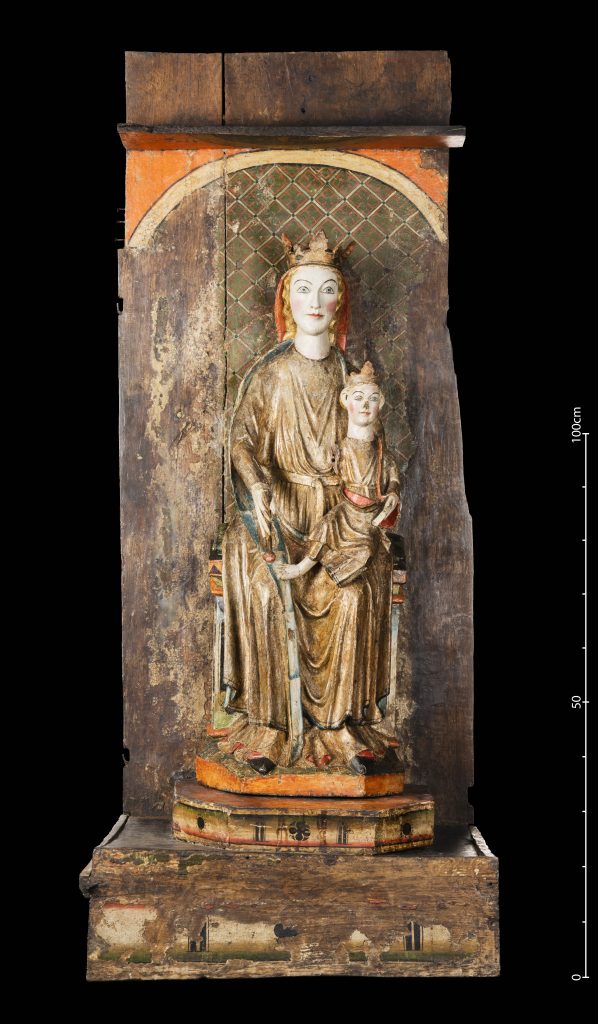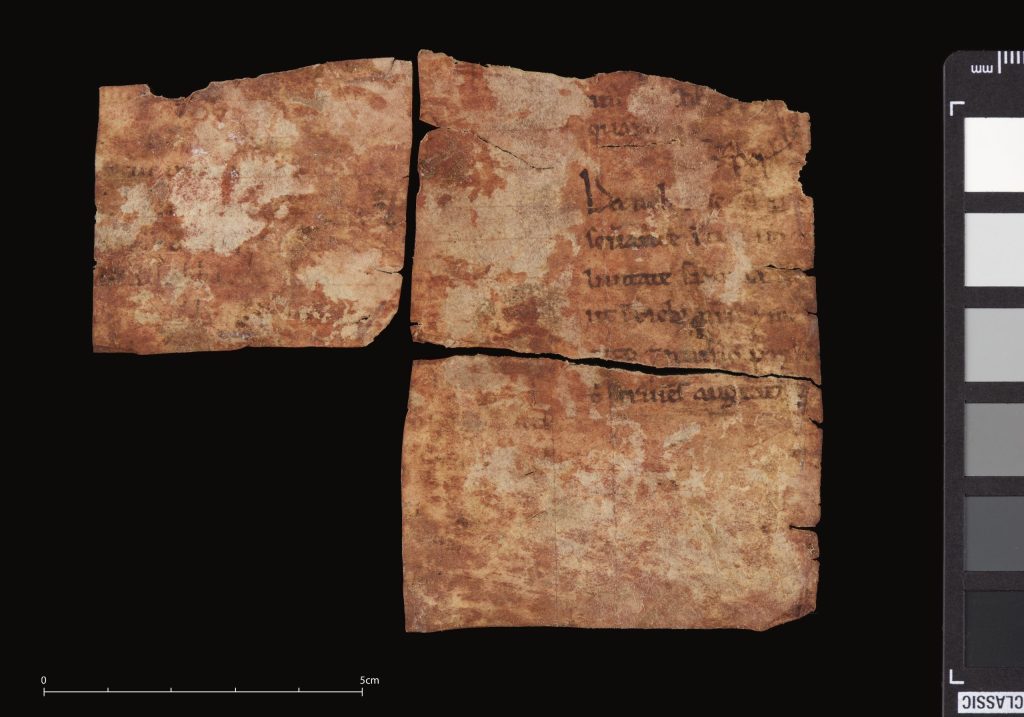

During the restoration of this Marian figure in the 1960s, several parchment fragments were found inside the sculpture’s hollow backside. These were recently rediscovered in the University Museum’s archive and interpreted. The fragments probably stem from a Missal. They were reused to fill holes that had occured during the carving of the figure before the polychromy (paint and gilding) was applied. According to various paleographers (experts of old scripture) the script type indicates that the book was written in a northern French scriptorium. In terms of its style, the figure shares likeness with both northern French and Norwegian Virgins from the middle of the thirteenth century. This illustrates the international spread of this Madonna type.
In 2020, research on tabernacle shrines led to the assumption that a canopied shrine in the collection probably belonged to the figure. While the sculpture already came to the museum in the 1860s, there is no notice of the baldachin until 1902. In that year, it was registered to originate from Giske in Sunnmøre. At the same time, a source from the 1860s mentions that the Madonna arrived at the museum together with some sort of shrine.
Art-technological analysis has revealed identical painted decorations on the shrine and the Madonna from Kyrkjebø. Painted black circles surrounded by small dots can be seen on both the shrine podium and on the Virgin’s throne. Moreover, the five-sided pedestal on the podium perfectly matches the base of the figure, which confirms that they originally belonged together. The wings of the shrine are lost, and of the baldachin over Mary’s head only a small part is preserved.
Northern France (?), c. 1250
From Kyrkjebø (Sogn)
Inv. nos MA 292, MA 334b